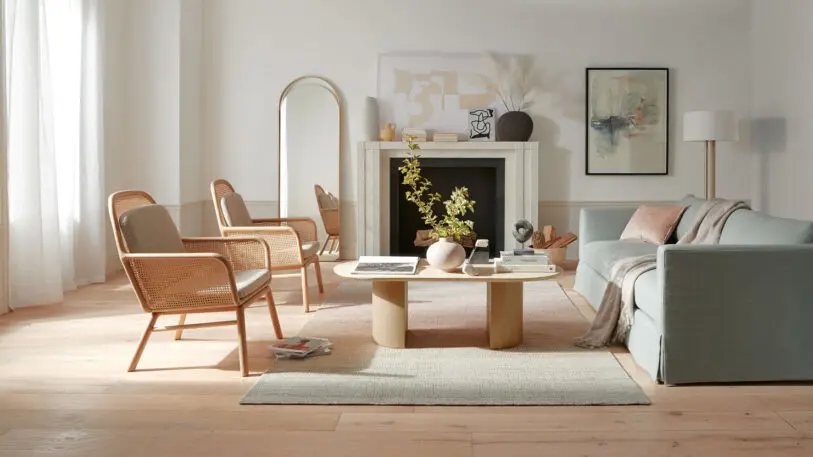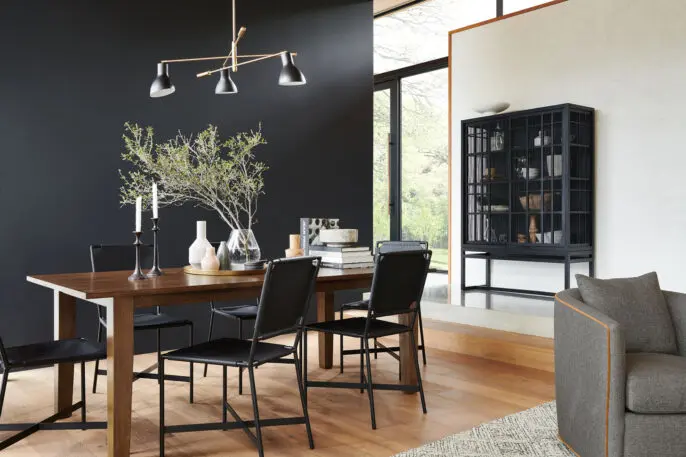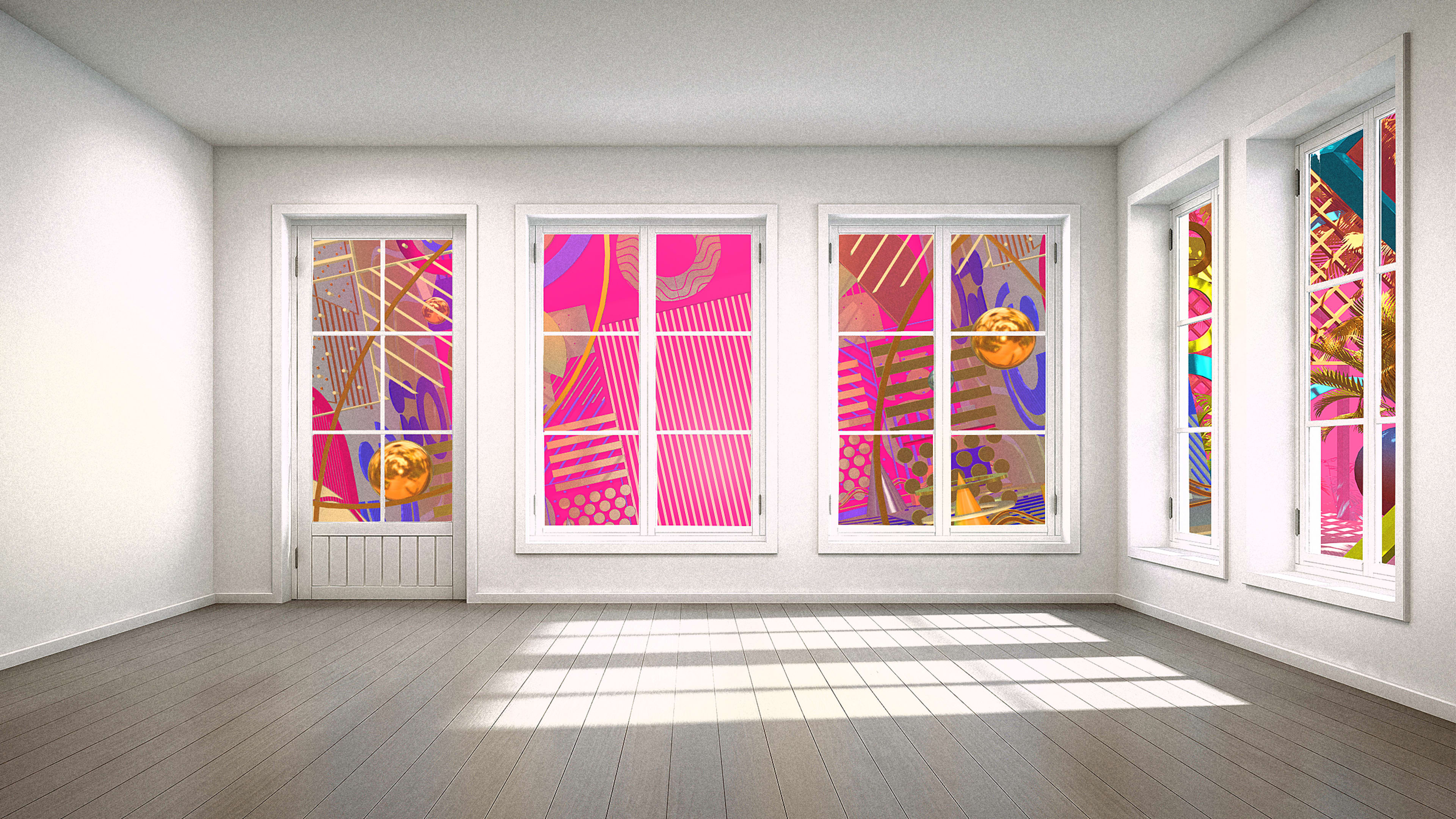COVID-19 has killed maximalism. The design trend gave us lush textures, jewel tones, baroque patterns, and much, much more over the past decade, as the global economy boomed: Sotheby’s launched a maximalism portal on its website devoted to loud, colorful statement pieces; even Ikea, famous for democratizing Scandinavian minimalism, took a sharp turn toward plush textiles, metallic finishes, and audacious wallpaper.
But this era of “more is more” is coming to an end, and the pandemic is to blame. Enter minimalism, which is making a comeback, but with a twist. The experts I spoke with suggest that it doesn’t look as cold and clinical as minimalist movements of the past. The trauma of the pandemic has left us craving warmth and comfort, so we are combining open, empty spaces with cozy textiles.
Consumers’ aesthetic sensibilities shifted almost as soon as lockdowns began. Ligne Roset, a high-end French furniture company, noticed an increase in revenue, but customers were not adding new or decorative pieces to their homes. Instead, they were upgrading their existing furniture to make their time at home more enjoyable. They invested in the softest, plushest sofas in the collection, like the Togo line, which features foam covered in layers of quilting, and picking soothing colors like blues and grays. “When the pandemic began, we saw people prioritizing comfort above everything else,” says Simone Vingerhoets-Ziesmann, managing director for Ligne Roset Americas. “They’re focused on their most essential human needs.”

Sebastian Brauer, Crate & Barrel’s VP of product design and development, says many consumers felt claustrophobic and were focused on creating space, or the illusion of space, in their homes through minimalist design. This meant buying simple furniture, keeping decorations or embellishments to a minimum, and creating as much open space as possible. “We’re searching for the feeling of amplitude,” Brauer says. “We’re returning to a ‘less is more’ mindset, but with a touch of comfort.”
And the few decorations consumers have been buying are utilitarian, like blankets, pillows, and soft rugs. Brauer suggests that this is a response to the anxiety we’re all experiencing as we’re surrounded by illness, death, and financial collapse. “We’re moving into a space of warm minimalism,” Brauer says. “We’re heading into a decade defined by purity, simplicity, and open space. But it’s not going to be as stark, sharp, or cold as minimalist movements of the past.”
Pandemics Reshape Design
This is not the first time a pandemic has pushed the world toward minimalism. A similar dynamic played out with the 1918 pandemic. In the late 1800s, the Victorian aesthetic was defined by ornate, embellished interiors covered in fabrics, wallpaper, art, and chandeliers as far as the eye could see. Then the influenza outbreak hit, which coincided with the scientific discovery of viruses, and suddenly it became clear that simple, streamlined spaces were far easier to keep clean. Paul Overy, an architectural historian, points out that decorative features in 19th-century homes harbored dust, which was believed to cause illness.
Architectural modernism was already in motion in the early 20th century and rejected the ornamentation that defined the previous century, but germ theory helped to accelerate it. Many prominent designers of the 1920s, from Le Corbusier to members of the Bauhaus school, focused on functionality in their work. Many created spartan homes with stark white walls and open spaces that signaled cleanliness. Overy says that designers from this era were obsessed with the sterilizing power of sunlight, so they built large windows that bathed the home in the sun’s rays. After the horrors of the pandemic, luxury was no longer defined by excess, but instead by design that kept you safe from disease.

Penny Sparke, professor of design history at Kingston School of Art in London, says that it makes sense that design has shifted to the most functional elements of space and cleanliness, rather than simply what is pleasing to the eye. She says that during moments of social strife, like wars, health crises, and financial collapse, designers try to use their work to solve problems. The tuberculosis and cholera epidemics of the 1800s, for instance, prompted designers to invent the modern toilet, with its indoor plumbing and sewage systems, as a way to mitigate the spread of these diseases. “During moments of crisis, humans are focused on survival,” she says. “Design responds to this. This pandemic is no different.”
How Designers Are Responding
Furniture designers’ lookbooks for fall and winter are beginning to reflect this simple, streamlined aesthetic, with touches of softness. West Hollywood, California-based Ben Soleimani is using fewer ornate light fixtures and detailed rugs, creating bright, airy rooms full of white furniture. Retail chain Arhaus is slowly moving away from busy wallpaper and gallery walls to open spaces with cozy armchairs and sofas. Ikea has ditched the baroque, jewel-toned imagery that filled its catalog three years ago and is transitioning back to spreads full of neat, compact furniture, functionally designed to keep clutter at bay. At Crate & Barrel, Brauer’s team has created sparely furnished rooms with white, unadorned walls, along with soft touches like throw pillows covered in velvet or fluffy sheep’s skin.
Post-Pandemic Aesthetic
Will warm minimalism persist after the pandemic? Alhadeff says that our preference for clean, uncluttered decor is likely to endure for years because space will continue to be seen as a valuable resource. We are likely to be homebound for months to come, and it could be years before we feel safe in public spaces like restaurants, stores, and public transportation. It is also likely that remote work will become the new normal, which means that desks and workspaces will take up space in our homes.

Brauer adds that the focus on protecting the planet is manifesting itself in many ways. Consumers are demanding more transparency from brands like Crate & Barrel, so they can understand the environmental impact of the products they put in their homes. But they also want to surround themselves with sustainably sourced natural materials, like cotton fabrics and wood furniture. In response, designers and furniture brands are offering nature-inspired decor, like rattan baskets and driftwood wall sculptures. “People want to bring the outside world indoors,” Brauer says. “At this time of anxiety, we’re trying to bring the purity and serenity of the natural world into our homes.”
Recognize your brand’s excellence by applying to this year’s Brands That Matter Awards before the final deadline, June 7.
Sign up for Brands That Matter notifications here.
